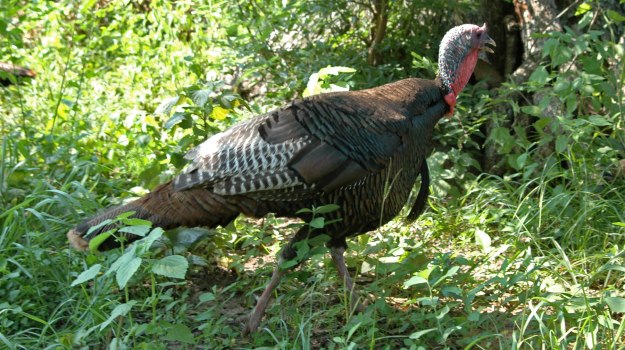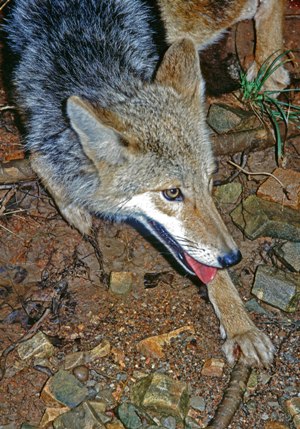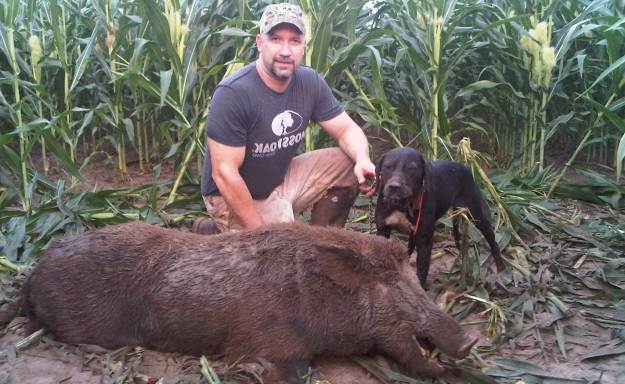
It is true that in some areas wild turkey numbers are either stable or increasing, but it’s also true that some local-level populations are in a decline. These are the statistics that have everyone from the biologist to the land steward to the hunter concerned. Predation has become an issue for wild turkeys, and when it comes to controlling that issue the debate between predator control versus habitat management begins.
Control issues when it comes to the predation of wild turkeys are usually more habitat-based, instead of putting a complete focus on controlling the vast array of turkey predators. There are a number of reasons why habitats have declined. On the other side of the fence, there are financial issues affecting the hunting of predators, such as a declining fur market that simply isn’t buying anymore.
When it comes to predator versus prey, the fact still remains: Eat or be Eaten. A predator lives by killing and eating other species - simple as that. Even wild turkeys eat insects and other small animals which, in a sense, makes them predators in their own small way. But when you look at the numbers, whether it be from birds or reptiles or larger mammals, the turkey is still dinner.
Turkey hunting is tough, with many states reporting success rates as low as ten percent. Yet, turkey hunting has increased in popularity by leaps and bounds. More and more state-of-the-art equipment, such as choke tubes and ammo are being produced and sold, allowing hunters to increase their luck when it comes to bagging the turkey.
When it comes to the habitat issue, as habitat health and size decrease, the nesting habitat for the wild turkey becomes concentrated making it easy for predators to attack. Adult turkeys see their share of battle, but it’s the young that are the most susceptible. Snakes, raccoons, opossums, skunks, weasels - all are big egg eaters. And once eggs are hatched, larger predators won’t pass them up either. Predators are always looking for the easiest meal. Even though they may have a species they prefer, they’ll take anything if the opportunity presents itself. The end result is that the ‘prey’ category must produce many more offspring than will actually survive just in order to offset the devastation predators will create.
 By working to repair habitats (creating food plots, fertilizing and planting trees, growing more cover and supplying more forage), nesting habitats can be revived. The expansion and rejuvenation of these areas will allow nests to be more spread out and brood survival rates will increase. With good escape cover, nesting cover, brood rearing cover and winter protection, wild turkeys can prevail.
By working to repair habitats (creating food plots, fertilizing and planting trees, growing more cover and supplying more forage), nesting habitats can be revived. The expansion and rejuvenation of these areas will allow nests to be more spread out and brood survival rates will increase. With good escape cover, nesting cover, brood rearing cover and winter protection, wild turkeys can prevail.
In areas with a small turkey population, controlling predators becomes more important. Man is the key, and higher fur prices would increase trapper participation. With more trappers in the woods, predator populations would decrease enough to help the wild turkey thrive. But with no economic change on the immediate horizon, the best way to diminish the effects of predators on the wild turkey remains in providing quality habitat.
Right from the start, from the moment that egg is laid, a predator is looking for that IHOP meal. But if there was room for the nests and could be spread out, the predator would no longer have such an easy target. By planting certain foods, new prey can enter the habitat that make up the normal diet of many predators. With all this new diversity and meals to choose from, the weight on the wild turkey lessens.
How we manage a habitat is critical to wildlife populations, so the quality as well as the distribution becomes more important than getting rid of the wealth of predators that exist. Expensive and labor-intensive, trying to remove hundreds of wild turkey predators from an area over several years will still most likely not even show a slight increase in the number of wild turkeys. So, while certain predators may need to be controlled in specific situations or locations, the long-term solution to maintaining wild turkey populations does not come from predator control. The job remains on our shoulders by providing good habitat management.
The Mossy Oak GameKeepers share the belief that being outdoors is about loving the land, its wildlife, and giving back more than you take. For more articles and information about managing land for wildlife, please visit farmingforwildlife.com.



























